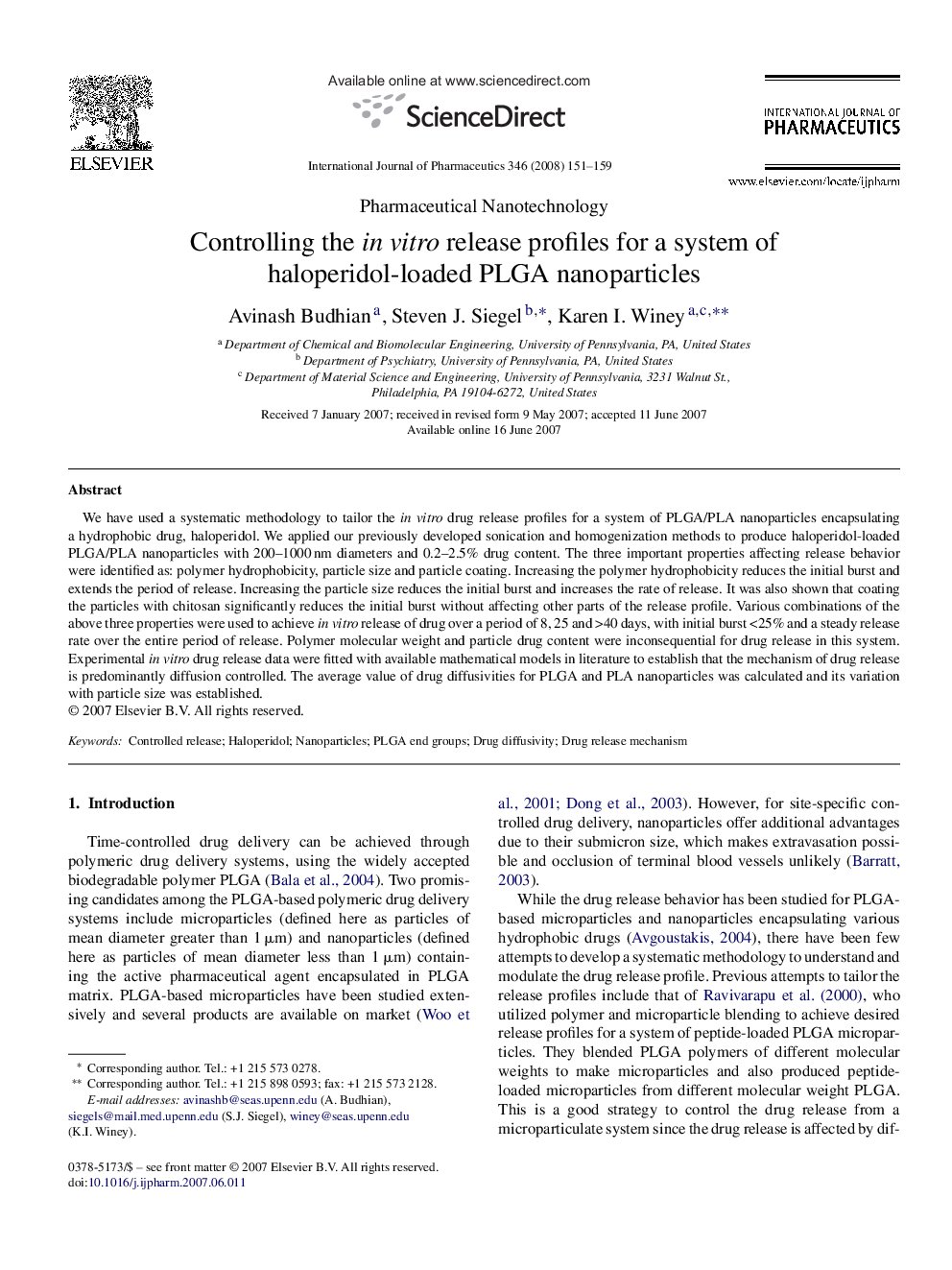| Article ID | Journal | Published Year | Pages | File Type |
|---|---|---|---|---|
| 2505988 | International Journal of Pharmaceutics | 2008 | 9 Pages |
We have used a systematic methodology to tailor the in vitro drug release profiles for a system of PLGA/PLA nanoparticles encapsulating a hydrophobic drug, haloperidol. We applied our previously developed sonication and homogenization methods to produce haloperidol-loaded PLGA/PLA nanoparticles with 200–1000 nm diameters and 0.2–2.5% drug content. The three important properties affecting release behavior were identified as: polymer hydrophobicity, particle size and particle coating. Increasing the polymer hydrophobicity reduces the initial burst and extends the period of release. Increasing the particle size reduces the initial burst and increases the rate of release. It was also shown that coating the particles with chitosan significantly reduces the initial burst without affecting other parts of the release profile. Various combinations of the above three properties were used to achieve in vitro release of drug over a period of 8, 25 and >40 days, with initial burst <25% and a steady release rate over the entire period of release. Polymer molecular weight and particle drug content were inconsequential for drug release in this system. Experimental in vitro drug release data were fitted with available mathematical models in literature to establish that the mechanism of drug release is predominantly diffusion controlled. The average value of drug diffusivities for PLGA and PLA nanoparticles was calculated and its variation with particle size was established.
